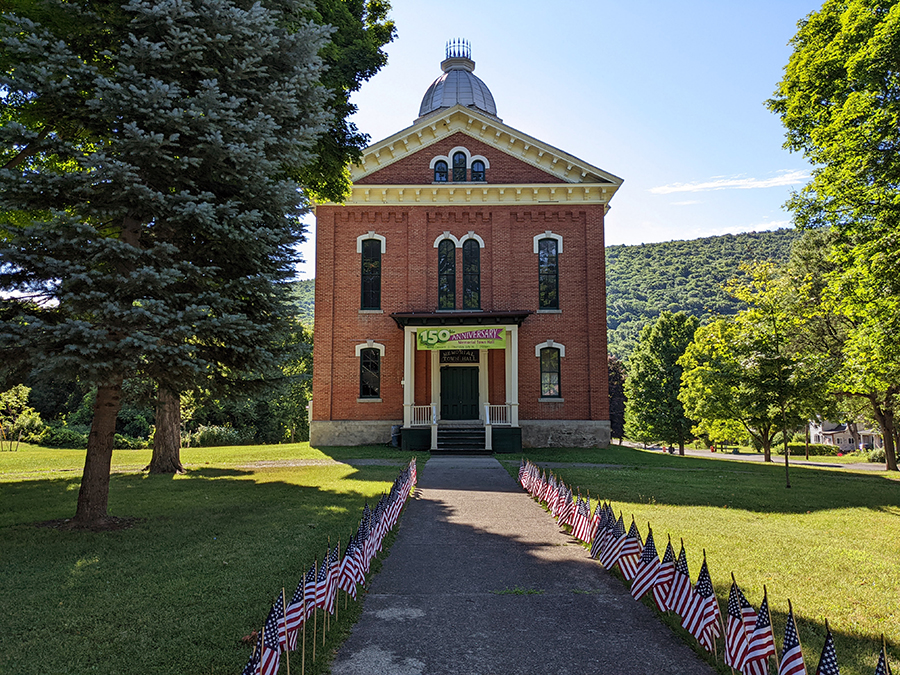The Five to Revive program, launched in 2013, highlights five properties in Western New York annually, needing investment for rehabilitation. This initiative, aimed at community revitalization, works with owners, officials, and developers to facilitate investment and restore these historic properties as vital social and economic community assets.
The 2024 list includes the Vacuum Oil Site in Rochester, a historic brownfield site owned by the City of Rochester and ExxonMobil Corporation. Plans for mixed-use development, including housing and community spaces, are in place, despite challenges due to industrial pollution. Another highlight is the Naples Memorial Town Hall in Ontario County, an Italianate-style building requiring repairs for continued community use.
The Palmyra-Macedon Aqueduct, the Warsaw Park Street Train Depot, and the need for grassroots preservation organizations, especially in rural areas, also feature on the list. These projects represent a mix of historical and architectural significance, facing various challenges in restoration and community integration. The Five to Revive program exemplifies the role of historic preservation in stimulating local economic and social revitalization.
NAPLES MEMORIAL TOWN HALL

Located in the scenic rural village of Naples in the Finger Lakes, the majestic Italianate style Naples Memorial Town Hall was built between 1870 and 1872. Following the Civil War, Naples uniquely forwent a traditional soldiers’ monument and instead chose a town hall to honor the more than 200 men from Naples who served in the war. Designed by noted architectural firm A.J. Warner & Company of Rochester, the Memorial Town Hall was the center of the village and town of Naples’s social and recreational activities until World War II. From 1942 to 1972, the building was privately owned and used for commercial and light industrial purposes. It was reacquired by the Town in 1972 and was listed in the National Register of Historic Places in 1996.
Today, the Memorial Town Hall serves as a community and event center and host site for the annual Naples Grape Festival. Though in use, the building needs necessary repairs to ensure its longevity, including a new roof and the historically sensitive addition of an elevator to make the building ADA accessible. Rehabilitation of the Memorial Town Hall will help preserve a distinctive piece of western New York’s architectural heritage, benefit the local community by opening the building to new uses, and promote heritage tourism in Naples.
PALMYRA-MACEDON AQUEDUCT

Located in Aqueduct Park just west of the village of Palmyra and adjacent to Erie Canal Lock No. 29, the Palmyra-Macedon Aqueduct (also known as the Ganargua Creek Aqueduct) was built in 1857 to carry the water of the Erie Canal over the Ganargua (or, Mud) Creek in the town of Macedon. The aqueduct was in service until 1918 when it lost its original purpose with the opening of the Barge Canal, which succeeded the Erie Canal and other canal systems in New York State.
Today, the aqueduct is part of the Erie Canal Pathway, and the remains of the structure include a towpath bridge and stone supports for the wooden canal prism. Erosion caused by the Ganargua Creek has threatened the stability of the aqueduct’s west embankment. In May 2021, the New York State Canal Corporation diverted the Erie Canal Pathway away from the structure and onto Route 31 due to concerns about a potential spillway collapse. Plans to reinforce the embankment were complicated by the discovery of more severe erosion than initially anticipated. Additional challenges include the annual accumulation of debris and the function of the spillway, which directs water from the canal to Ganargua Creek.
According to the Canal Corporation, the aqueduct is one of only a handful of such structures left throughout the entire New York State canal system. Canal Corporation engineers continue to explore solutions and hold advisory meetings to solicit community feedback. The fate of the aqueduct mirrors that of the Macedon Aldrich Change Bridge, which was removed from the canal in 1915 but later acquired by the Town of Macdon in 1996 and restored in 2004 as part of the Palmyra-Macedon Towpath Trail on the New York State Heritage Trail system.
Potential options for the rehabilitation of the aqueduct include repairs to rebuild its embankment and stabilize it in place, or the careful deconstruction and relocation of the structure to preserve it as a vital piece of state history and to give it a new purpose for the appreciation of future generations.

